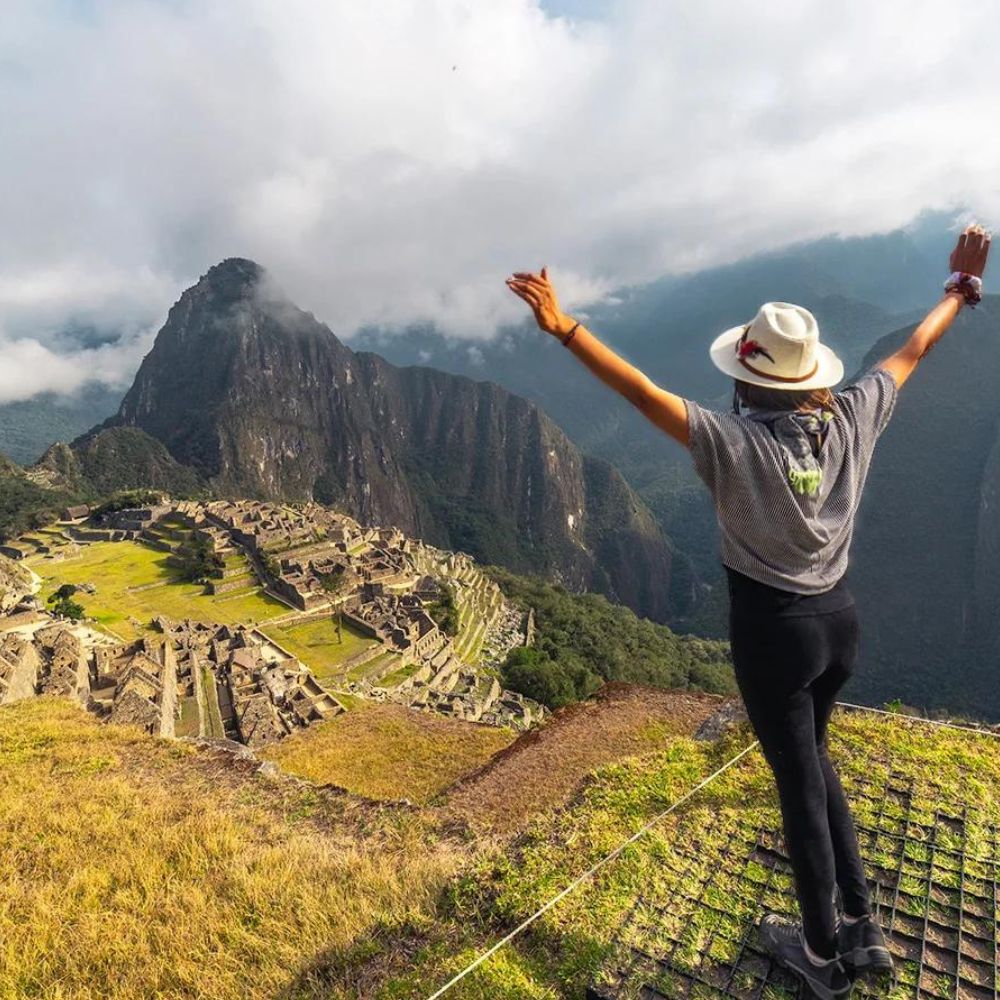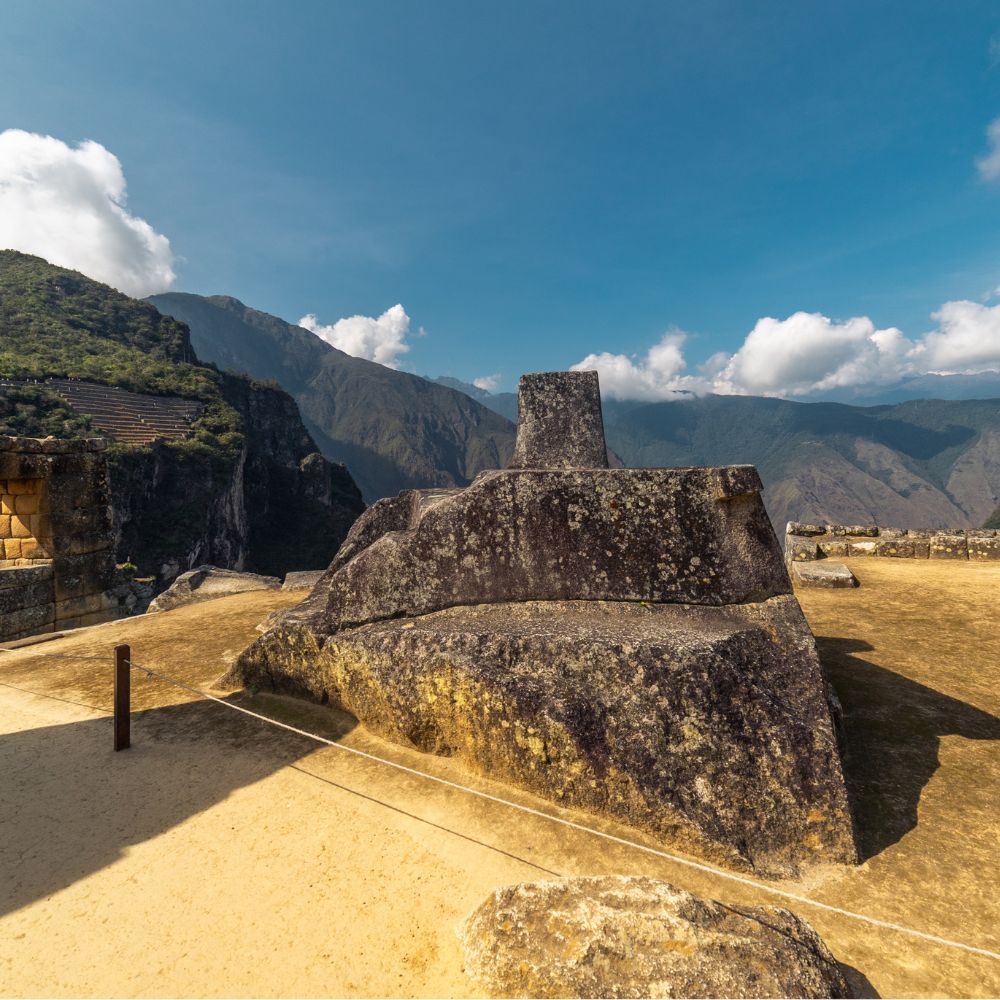

Table of Contents
Machu Picchu is, arguably, the most important architectural achievement of the Inca Empire. Surrounded by a vast tropical forest, it was built during the reign of Inca Pachacútec.
The name Machu Picchu comes from Quechua and means “Old Mountain” (Machu meaning “Old” and Picchu meaning “Mountain”).
Today, the archaeological site of Machu Picchu is Peru’s main tourist attraction, making it a must-visit for anyone who comes to the country. The Machu Picchu Citadel is one of the most remarkable landmarks in Peru. Located high in the Andes Mountains, this citadel in Peru continues to attract millions of visitors every year. Known for its intricate stone architecture and stunning views of the surrounding jungle, the Machu Picchu citadel offers an unforgettable experience. As one of the most significant symbols of Inca civilization, this ancient site has captured the imagination of adventurers and history lovers alike. Travelers from all over the world flock to Machu Picchu to witness its breathtaking beauty while learning about its rich history and cultural significance.
Many travelers also wonder where Machu Picchu is, one of the New Seven Wonders of the World. This Inca citadel is located in the Eastern Cordillera of southern Peru, at 2,430 meters above sea level, on the left bank of the Vilcanota River, overlooking the Sacred Valley of the Incas. It belongs to the district of Machu Picchu, in the province of Urubamba (Cusco), 112.5 km northeast of the city of Cusco.
Machu Picchu was built in the mid-15th century during the reign of Inca Pachacútec, the main builder and expander of the Inca Empire. It likely served as his residence and religious center. This important site was abandoned after the arrival of Spanish colonization.
It was rediscovered in 1911 by Hiram Bingham, a historian and professor at Yale University. During an expedition in the Cusco region, accompanied by the local farmer Melchor Arteaga, he reached the archaeological site and was amazed by its roads, agricultural terraces, warehouses, and more. Everything was covered by the dense vegetation of the area, evidence of the passing centuries.
The Machu Picchu Citadel was presented to the world in 1913, becoming a major tourist attraction. Over the years, its popularity grew until, on December 9, 1983, it was declared a UNESCO World Heritage Site. On July 7, 2007, it was named one of the New Seven Wonders of the World.


The Historic Sanctuary of Machu Picchu is not only of great cultural importance but also home to remarkable biodiversity, as it is located between the Andean highlands and the edge of the Amazon rainforest.
Within the Historic Sanctuary of Machu Picchu, there is an impressive variety of flora, with more than 400 known plant species. These include orchids, bromeliads, ferns, and angel’s trumpets, among others. The sanctuary also features native trees such as q’euña, pisonay, and cedar.
The fauna of Machu Picchu is equally diverse. Mammals such as the spectacled bear, dwarf deer, and Andean fox inhabit the area.
The sanctuary is also home to a wide range of bird species. One of the most emblematic is the Andean cock-of-the-rock (Rupicola peruvianus), declared Peru’s national bird in 1941. Thanks to its rich biodiversity, Machu Picchu is considered one of the world’s best destinations for birdwatching. Notable species include the Andean condor (Vultur gryphus), the green jay (Cyanocorax yncas), and the cinnamon flycatcher (Pyrrhomyias cinnamomea), among many others.
Ollantaytambo is the closest city to Machu Picchu, located in the Sacred Valley of the Incas. It is an essential stop for anyone heading to the archaeological site.
In addition to Ollantaytambo, there is the town of Aguas Calientes (also known as Machu Picchu Pueblo), located just 25 minutes from the Inca citadel by bus. At the base of Machu Picchu, on the banks of the Urubamba River, this small town has a population of around 5,000 inhabitants.
The climate in the Machu Picchu Citadel, as well as in Aguas Calientes, is warm due to its location in Peru’s cloud forest. It has a subtropical climate: warm and humid during the day, and cooler and fresher at night.


Machu Picchu was built between two geological faults, hence it is prone to various seismic movements; however, the architecture with which it was designed does not allow even the slightest movement between the stones.
Therefore, we can say that Machu Picchu is earthquake-resistant; its more than 500 years in existence are proof of its resilience.
Machu Picchu is, undoubtedly, a great work of hydraulic engineering; the Incas had to devise ways to channel, store, distribute, and drain water from the citadel.
A 749-meter-long canal with a 3% slope was built, with 16 fountains for distributing water throughout different areas of the site. The slope allowed the water to flow continuously all year round.
The Temple of the Sun is the most important sector within the archaeological zone, as it pays tribute to the most relevant deity of Inca culture. It was built in a circular form, with windows and niches, once decorated with gold and silver.
This significant space also served as an astronomical observatory to determine seasonal changes and the arrival of each solstice, thanks to the strategic position of its windows.
The Temple of the Three Windows is, probably, one of the best-crafted structures in the entire citadel. This construction consists of a wall measuring 10 meters long and 8 meters wide, with three trapezoidal windows that offer a panoramic view of the Huayna Picchu and Putucusi mountains. It was an important space where religious ceremonies and worship were conducted.
The Intihuatana, which in Quechua means “where the Sun is tied down,” served as a tool for astronomical observation and as a calendar. It also served ceremonial purposes in specific religious activities within the citadel.


Hiring a travel agency to explore the majestic Machu Picchu citadel is a wise decision for several reasons. Firstly, agencies possess extensive knowledge of the site and the logistical aspects necessary to organize a seamless trip.
From booking train tickets to coordinating local guides, they handle all the details so that travelers can fully enjoy their experience.
Additionally, travel agencies often offer packages that include transportation, accommodation, and additional activities, which significantly simplifies trip planning and often results in financial savings.
Another key benefit is access to valuable insider knowledge and exclusive experiences. Agencies typically provide expert guides who offer detailed insights into the history and culture of Machu Picchu, enriching every visit.
Choosing a travel agency is the best way to make the most of your visit to Machu Picchu and there is no better choice than Cuscoperu.com
Plan your Machu Picchu day trip from Cusco with us today!

Happy passengers